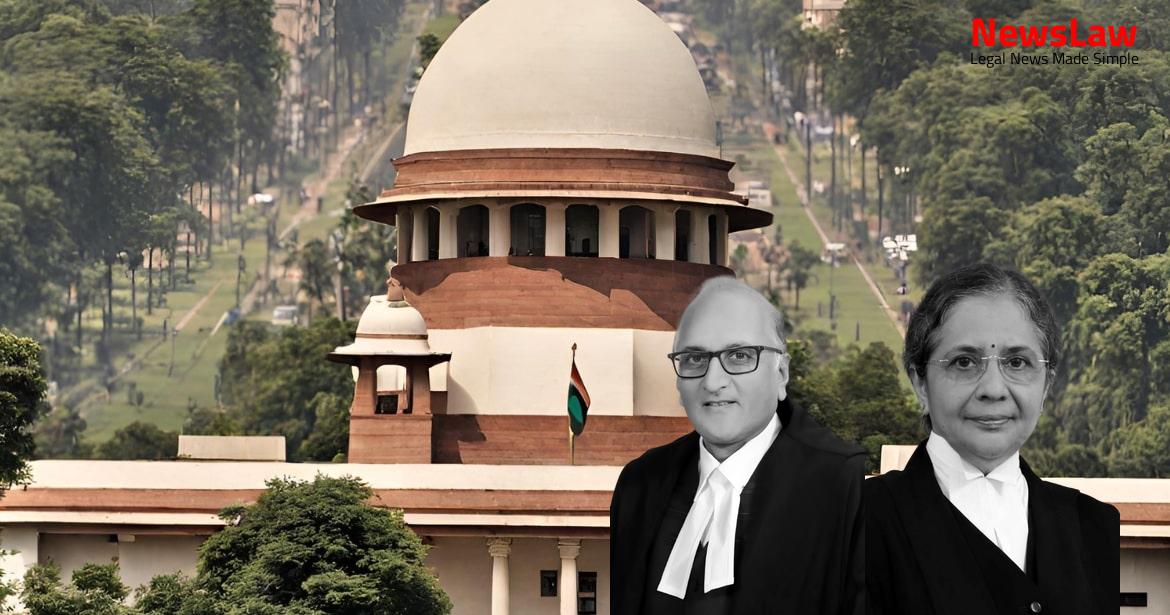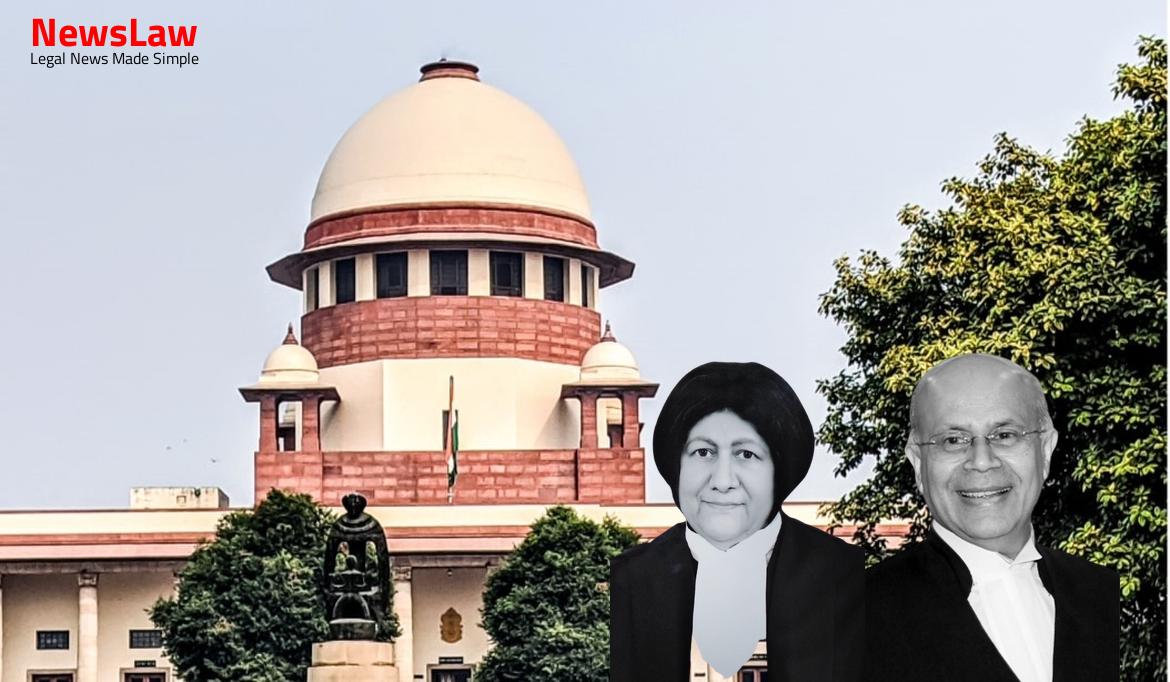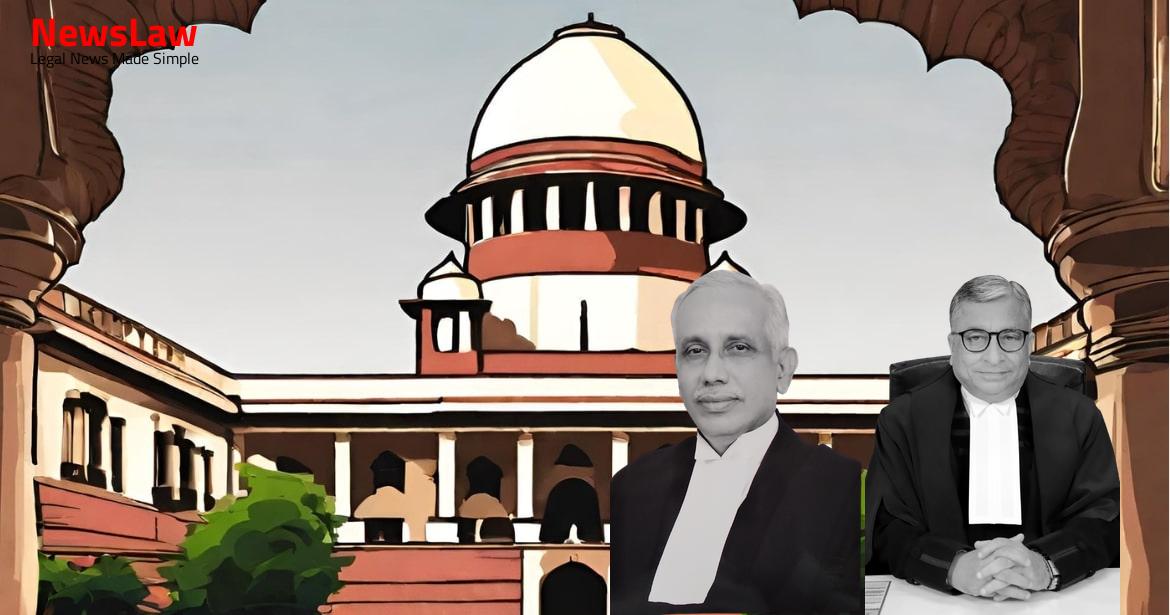Delve into the intricate legal analysis by the court regarding the differentiation between tax and fee in commercial contracts. The judgment meticulously examines the concept of ‘royalty’ and emphasizes the need for a quid pro quo in determining the nature of levies. Stay informed about the critical distinctions that shape financial obligations in contractual relationships.
Facts
- Civil Appeal Nos. 9845-9846 of 2016 by INDSIL and Civil Appeal Nos. 9847-9850 of 2016 by CUMI against a common judgment of the High Court of Kerala.
- Clauses 8 and 14 of CUMI Agreement specify conditions related to energy generation and royalties.
- Policy allows private agencies to set up hydel schemes at their cost with stipulations from the Government/Board.
- An Agreement was made between CUMI and the Board referring to the Policy for setting up the Maniyar Hydro Electric Project.
- CUMI commissioned the project in 1994 and has been generating electricity for self-consumption since then.
- INDSIL also has a factory in the state and was availing electric energy supply from the Board.
- CUMI filed for the allotment of the ‘Maniyar Hydel Scheme’ in the River Kakkad Basin.
- Government policy allows private agencies to set up hydel schemes for electricity generation at their cost with additional royalties on water.
- The Kuthungal HEP is a CPP implemented by M/s INDSIL.
- Energy from the project will be delivered free of cost to the company after deducting wheeling charges and T&D losses.
- An agreement was entered into between INDSIL and the Board for setting up the Kuthungal Phase I and II Project in Idukki district with 21 MW capacity.
- INDSIL Agreement incorporated terms and conditions from the Policy.
- Clauses 10 and 19 of the INDSIL Agreement detail the metering of energy fed into the KSEB grid.
- Government’s response stated that the Petitioner is a Captive Power Plant generating power from a water course for self-consumption, not for distribution to KSEB.
- 22.54% of the power generated by the Petitioner is due to controlled release of water.
- An agreement was made regarding the royalty to be charged on water used for power generation.
Also Read: Electoral Malpractices in Mayor Election
Arguments
- The petitioner’s hydel project at Maniyar no longer receives controlled release of water from Moozhiyar Power House.
- No Clause 14 provision in INDSIL Agreement as in CUMI Agreement.
- The imposition of royalty is based on the advantage gained from controlled release of water.
- Contentions raised by the 1st respondent regarding controlled release of water were rejected.
- Differentiation between CPPs and IPPs in terms of controlled release of water.
- IPP’s were relieved of royalty obligations due to the nature of energy distribution.
- IPP’s and CPP’s are not similarly situated.
- IPP’s do not benefit from controlled release of water.
- The release of water from Anayirankal benefits Panniyar Power Project primarily.
- Petitioner’s project does not solely rely on controlled release of water.
- Royalty under Ext. P1 should be based on water usage, not energy generation.
- Charges imposed post-1998 on the petitioner are deemed arbitrary and unfair.
- The petitioner applied for a captive generation station as per the Government Order.
- The petitioner is provided with water for power generation without investing in storage facilities.
- The petitioner’s claim that the conditions were thrust upon him is refuted.
- The controlled release of water to the petitioner is a commercial arrangement with a cost component.
- Both CUMI and INDSIL willingly accepted the liability to pay for controlled release of water.
- The agreements with the agency included provisions for payment for the controlled release.
- The petitioner’s project utilizes water from controlled releases at specific power houses.
- The petitioner’s claims of unfairness, illegality, and arbitrariness in the payments are denied.
- The matter regarding payment for controlled release is seen as a contractual obligation rather than compulsion.
- The agreements were entered into voluntarily without coercion by the respondents.
Also Read: Balancing Power and Transparency: Electoral Bonds Struck Down, Disclosure Mandated
Analysis
- The Clause 14 of the Policy and its incorporation into the Agreements were deemed not unconscionable or arbitrary.
- The basis for the distinction between projects of CUMI and INDSIL was justified, as both benefitted from controlled water supply.
- The charges imposed for controlled water supply were justified by the contractual agreements entered into by the parties.
- The distinction between Captive Power Producers (CPP) and Independent Power Producers (IPP) was made clear, supporting the imposition of charges for controlled water supply.
- The argument of compulsory exaction and discrimination in imposing charges for water supply was deemed without merit.
- The appellants’ challenges regarding royalty and charges for water supply were addressed based on the terms of the agreements and the Policy.
- The agreements consciously accepted the terms of the Policy, including Clause 14, leading to liabilities to pay charges for controlled water release.
- The single judge’s interference based on discrimination under Article 14 was found to lack a basis.
- The controlled supply of water facilitated smooth electricity generation and was a privilege enjoyed by both CUMI and INDSIL.
- The fees charged for controlled water release were not viewed as a tax but as a justified payment for the benefit received.
- IPPs produce electricity for the use of the Board, not for self-consumption.
- Section 76(1) was challenged and struck down as ultra vires.
- Tax and fee distinctions were discussed based on various legal precedents and definitions.
- The concept of ‘royalty’ was examined as compensation for rights and privileges enjoyed by the grantee.
- The difference between tax and fee was emphasized based on the purpose of the levy and the presence of a quid pro quo.
- Various cases and judgments were cited to illustrate the distinction between tax and fee, particularly in the context of mining leases.
- The essential characteristics of tax and fee were outlined to differentiate between the two types of levies.
- Different dictionary definitions of ‘royalty’ were presented to clarify its meaning in legal contexts.
- The judgment highlighted the need for a nexus between the levy and the service rendered, especially in commercial contracts.
- The principle of unequal bargaining power in contracts was discussed in relation to the enforceability of unfair clauses.
- Charges were justified
- Not a compulsory exaction
- Pure contractual relationship between parties
- Division Bench’s decision to reject submissions by CUMI and INDSIL was right
Also Read: Recall of Resolution Plan Approval: Legal Analysis
Decision
- All submissions made by CUMI and INDSIL were rejected.
- The appeals were dismissed without any order regarding costs.
Case Title: M/S INDSIL HYDRO POWER AND MANGANESE LIMITED Vs. STATE OF KERALA AND OTHERS (2021 INSC 449)
Case Number: C.A. No.-009845-009846 / 2016



